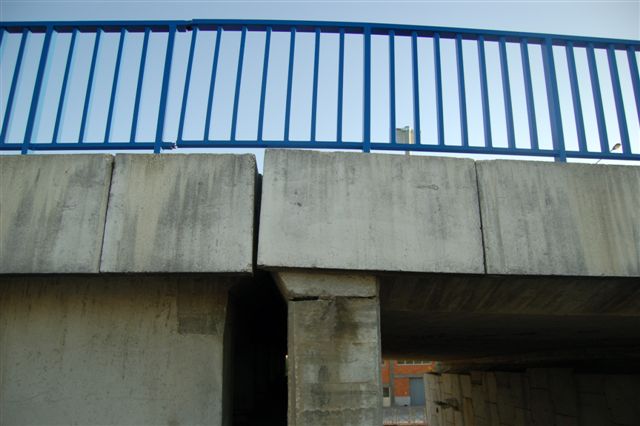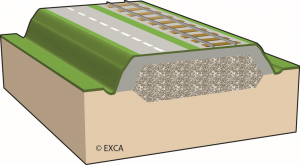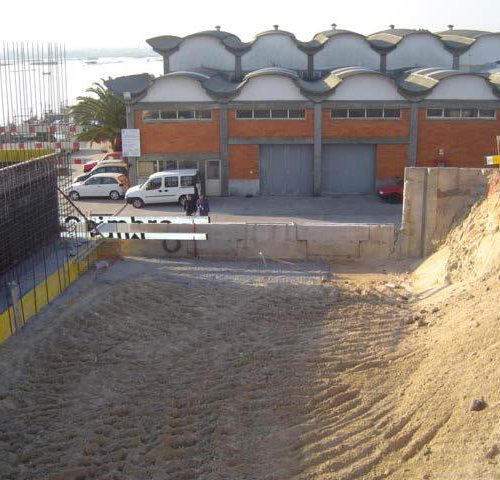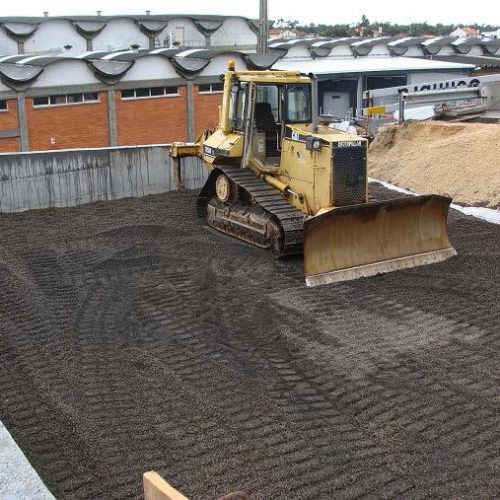Portugal
Bridge abutment “Aveiro”
Year: 2010
Location: Aveiro
Country: Portugal
Volume: 1.000 m³ expanded clay 10-20 mm
Owner Builder: AENOR/ASCENDI
Contractor: Rosas Construtores
Designer: GEG
Problem / Solution
Built in 1998, the bridge over the river Boco is located in the first kilometres of the A25 highway, an important road that links the Portuguese coast (and Aveiro harbour) to Spain, intensely trafficked by trucks. When the bridge was built, there was no ground treatment or piling in the west abutment, yet it was built over compressible alluvium soils. Consequently, a consolidation process started, produced by the self weight of the fill, and as the underlying alluvium consolidates, settlements can be seen on the surface, in such a way that more bituminous concrete recharges have been done, in order to repair the pavement, but only as a provisional solution, as the settlements do not finish.
Experience
Expanded clay made it possible to avoid the use of more complex reinforcement techniques and allowed reduction of costs, execution time as well as logistical apparatus. No settlements have been recorded 4 years after the restoration.
Why expanded clay?
Evaluation of the compressibility parameters of the alluvium shows that one more decade would be necessary to complete the consolidation process, if no measures were implemented. But it would mean that pavement recharges had to be done during next decade, until consolidation was terminated. Removing the normal weight fill and constructing a lightweight fill with 10-20 mm expanded clay was a clever solution to stop the consolidation process. Since the underlying alluvium soil has been loaded by the fill along the last ten years and now the load is lightened, no further settlements will occur.




